“I can’t believe we built this in Memphis,” said Carol Coletta, president and CEO of the Memphis River Parks Partnership (MRPP), on a bright, late-summer morning just before the new Tom Lee Park opened to the public. Coletta’s incredulity is only a bit dramatic: She has spent years leading the charge to make riverfront improvements a reality, and the park’s arrival is just one part of her vision. While the city continues to struggle with poverty and the spatial consequences of racism in the American South, it shows encouraging signs of rebirth: Yes, there’s the Bass Pro Shop pyramid in the nearby Pinch District, but Tom Lee Park is bigger and better. The new 31-acre park was designed by SCAPE and Studio Gang with a price tag of $61 million. It is the latest in a string of ongoing improvements by MRPP that reconnect Memphians to their river.
Beginning in 2017, a City of Memphis taskforce commissioned Studio Gang to develop a master plan for how to improve its six miles of Mississippi riverfront. The results of its study, distributed as the Memphis Riverfront Concept, triggered the renaming of the Riverfront Development Corporation, which had been around since 2000, into MRPP in 2018, just after Coletta joined as CEO. (Studio Gang shared this work as Stone Stories, part of the U.S. pavilion during the 2018 Venice Architecture Biennale, which included the installation of 800 cobblestones shipped over from Memphis.) Since then, MRPP has also improved and renamed two downtown parks, formerly named for Confederate leaders, and opened the River Line, a 5-mile path which connects the string of parks under its management.
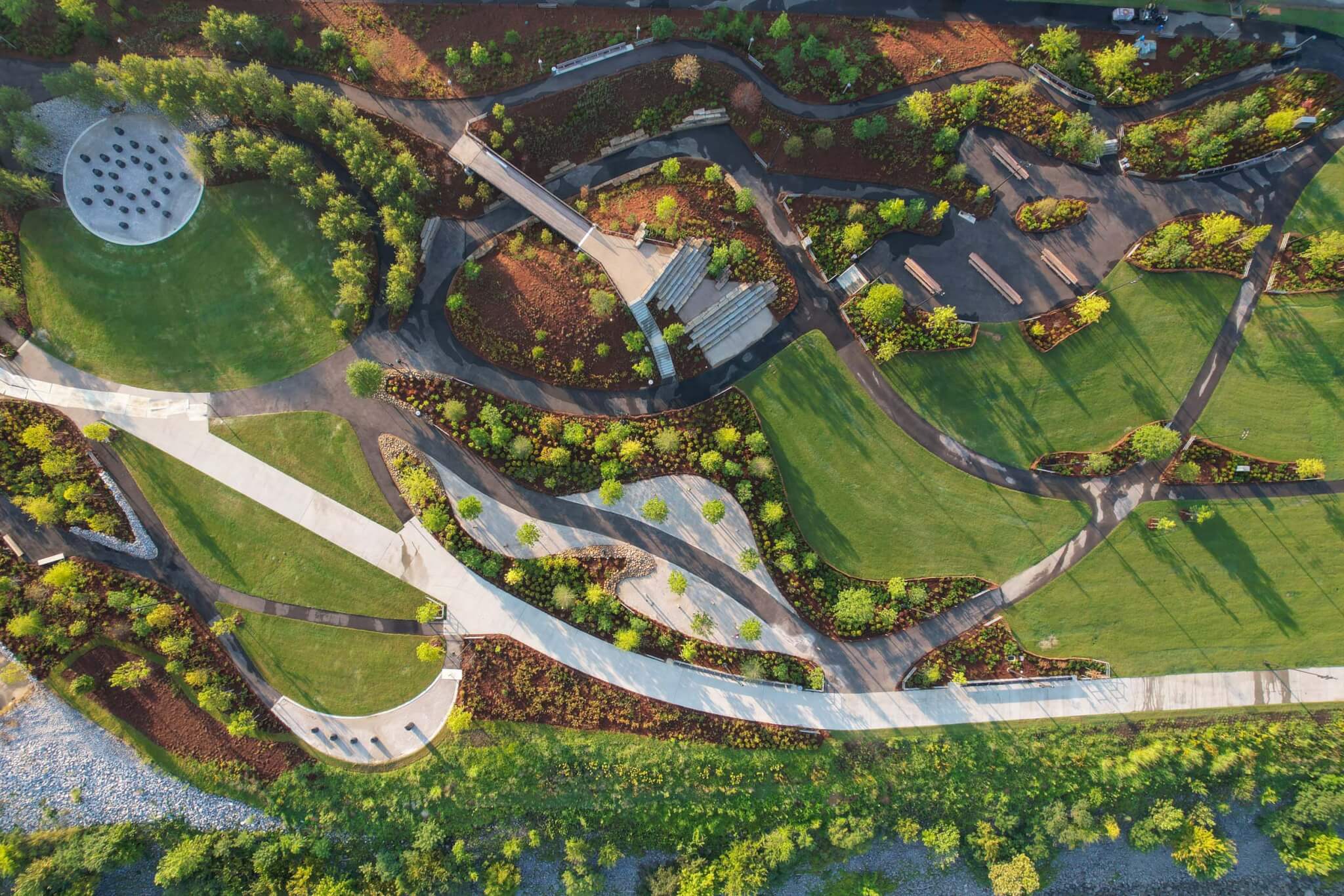
Tom Lee Park was next. It was named for a Black river worker who in 1925 saved the lives of 32 people from a sinking steamship despite not knowing how to swim himself. His bravery was met with national praise.
Before these eventual improvements, the park was a “moonscape,” in the words of Tyree Daniels, the chair of the board for MRPP. The expanse was, at times, used as a dumping ground and was expanded to its current size by the U.S. Army Corps of Engineers in the early 1990s. Riverside Drive, a four-lane road built in the 1920s, further limited access to the open area. The park’s clay cap over existing sediment meant that few things could take root.
SCAPE’s work began with extensive remediation to the compacted soil. The landscape design took inspiration from the river and all its riffles, micro-deltas, and tailouts. In plan, it has winding lines that mimic sedimentary flows. “The scale of the Mississippi River is massive and can’t be underestimated,” Kate Orff, founding principal and partner at SCAPE, told AN. Orff is no stranger to the Mississippi, as her family hails from Clinton, Iowa, and she has long studied its watershed for academic studios and publishing efforts. She felt the initial design gesture should work at “the scale of Memphis, and how the park needed to reach out to downtown and then up the bluff, but it simultaneously had to live at the scale of the river.”

SCAPE designed for biodiversity, with a plant list that prioritized native species from Tennessee and across the South. It added over 1,000 new trees, including almost 300 oaks. The Corps still maintains the park’s sloped embankment, so interventions begin after a setback from the water’s edge. Cue the goldenrod, milkweed, and a range of bottomland oaks: bur, overcup, nuttall, swamp white oak, and willow oak. All selections were made to be flood resistant—the park was submerged as recently as 2011—and boulders were placed to stop debris from flowing further ashore during high water.
Further up, SCAPE had more freedom to shape the topography to make embankments which shelter park users from Riverside Drive. Here, upland species line the edges of lawns and playscapes, with more oaks: red, Shumard, post, Chinquapin, and white. Onsite, Brad Howe, design director at SCAPE, described how this tall canopy will shelter an understory of fruiting trees, including paw paws and persimmons, which will help support several butterfly species.
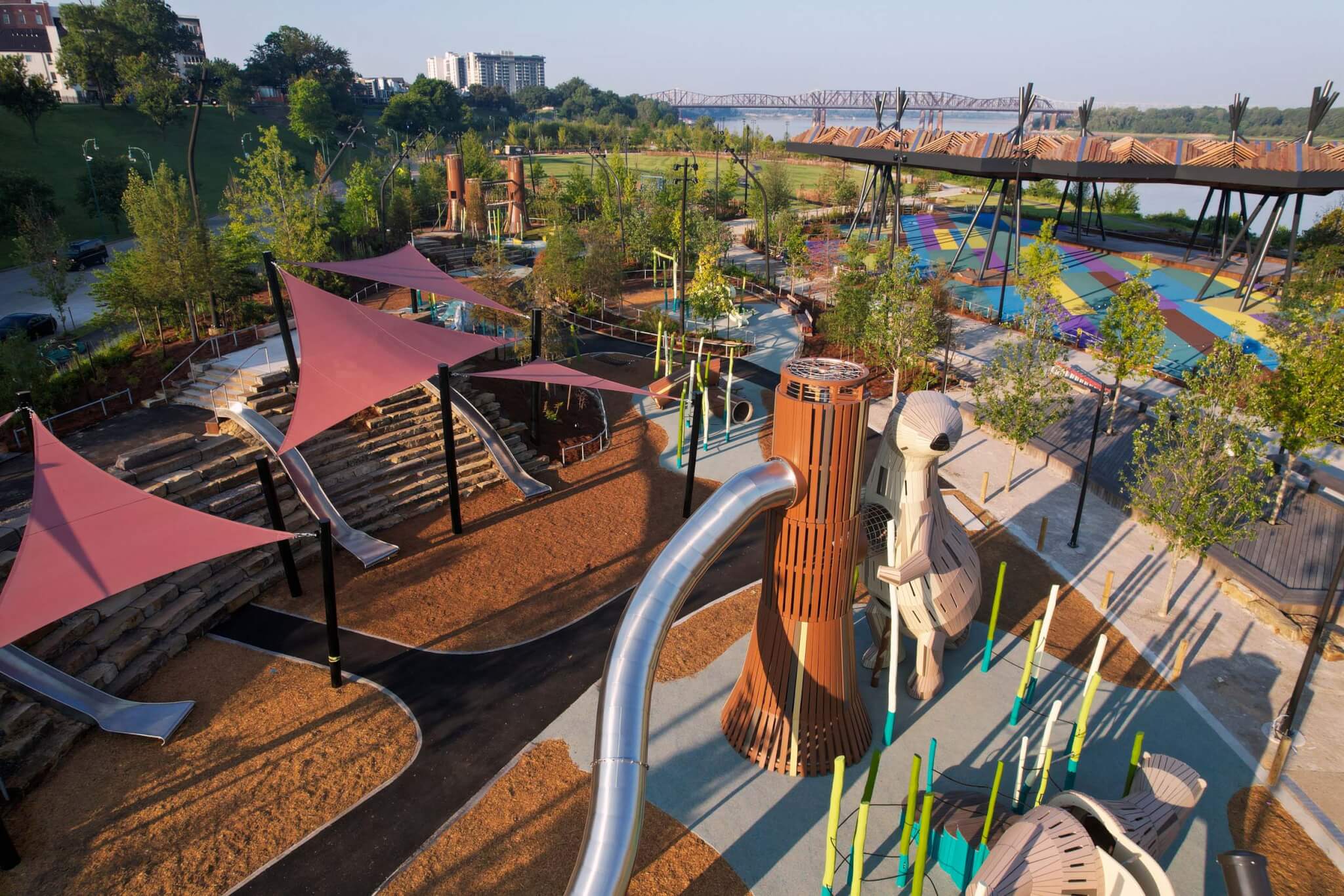
Pathways guide visitors around and through these plantings, but also across the city. Previously only staircases led to the upper bluffs; the new park adds the first ADA-accessible ramp at Carlisle Cutbank Bluff and improves pedestrian crossings along Riverside Drive. Four zones delineate park programs: Civic Gateway, Active Core, Community Batture and Habitat Terraces. To the north, closest to downtown, a Civic Gateway offers a plaza, oak grove, and lawn. To the south, Community Batture stages public art, and offers a meditation path that wanders through a birch grove, and a scenic overlook. Finally, Habitat Terraces host a pollinator lab, sound gardens, and an outdoor classroom.
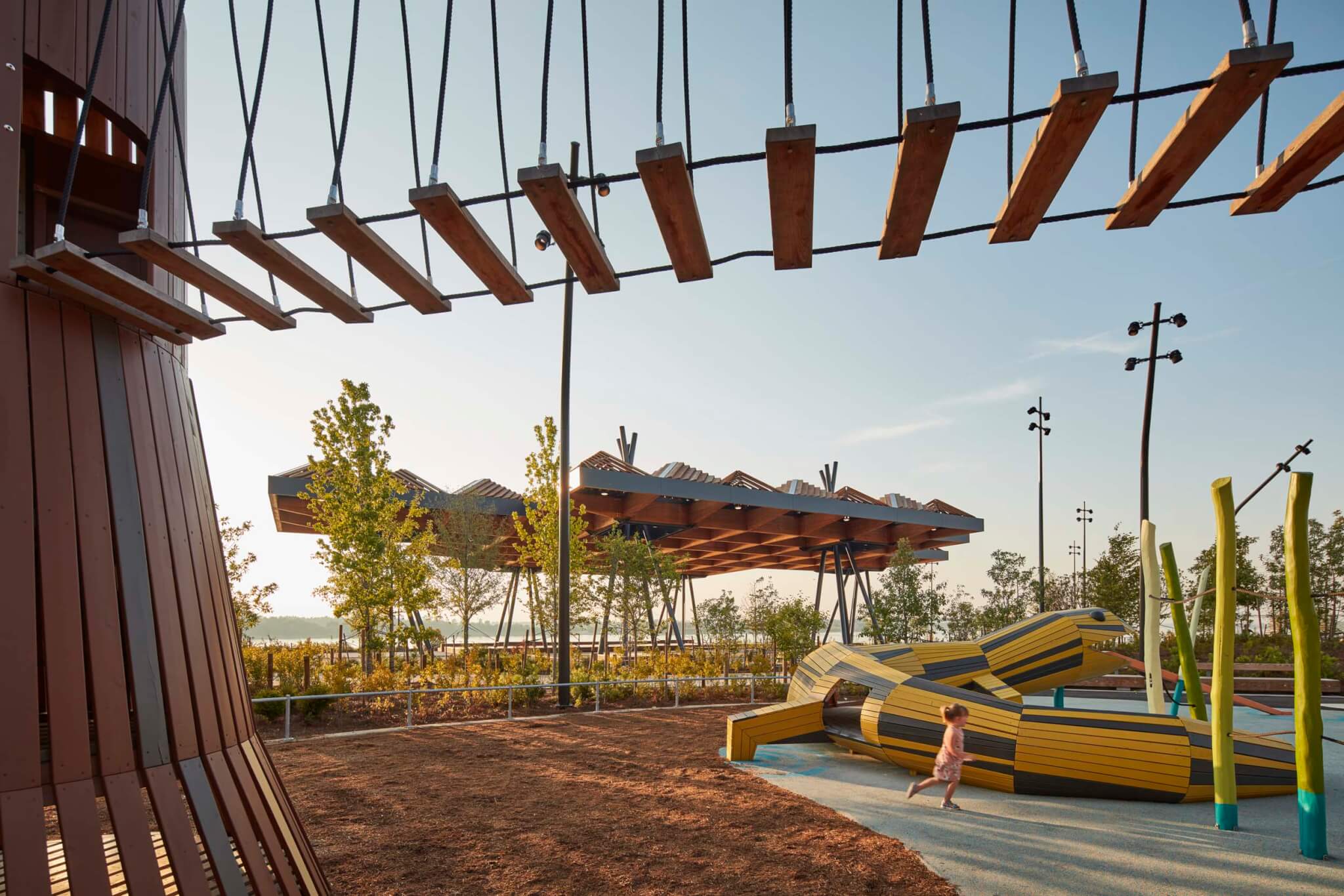
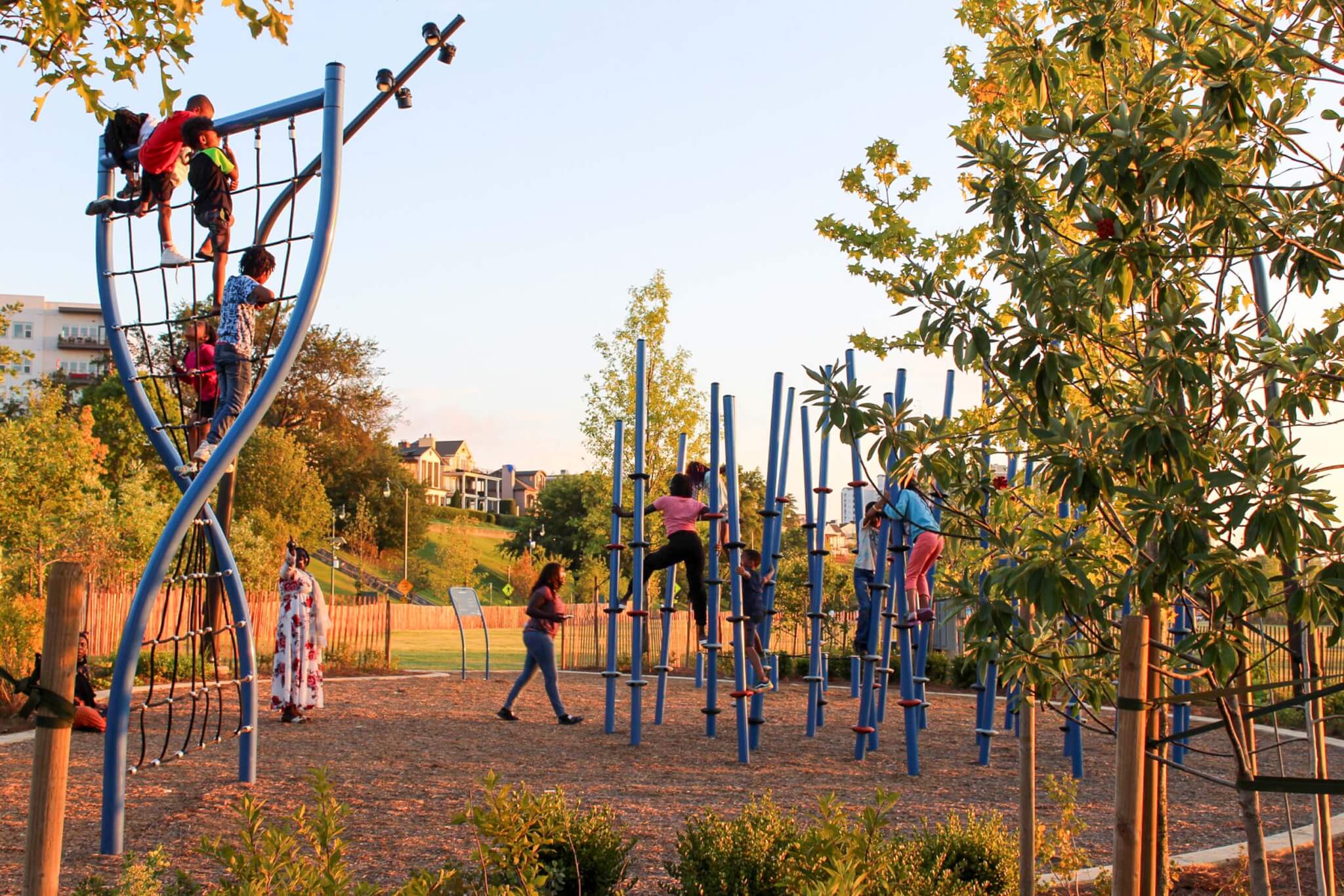
The Active Core of Tom Lee Park sports its most intensive improvements. Play sculptures designed by Monstrum, a Danish company that designs and fabricates playgrounds, in collaboration with SCAPE take the shape of aquatic creatures like a river otter and a sturgeon. Nearby, two support buildings designed by Studio Gang follow the contours of SCAPE’s deltaic layout and, in a nod to the river working as a conveyor of timber, are structured using solid tree trunks stripped of their bark. A central plaza also hosts the glulam grid of Studio Gang’s Sunset Pavilion, made with Southern yellow pine and supported by six “quad-pod” columns inspired by historic waterfront cranes made from logs. A mural on the pavement by the Memphis-born painter James Little adds angled bands of color to the plaza. This area, with its ample seating for river watching, promises to be a popular spot for Memphians.
“The pandemic showed us that we need public spaces for many different situations, but also that programming, which comes from the community, was important,” Jeanne Gang said. Tom Lee Park is a major infrastructure investment for the city, but it is meaningful for Black Memphians in particular. The amenity is blocks away from several historically Black neighborhoods, and parks access was segregated in earlier eras. The memory of violence, in many forms, isn’t far away: Gang’s Sunset Canopy was named in honor of Tyre Nichols, a Black man who died in January at the hands of Memphis police officers; he loved taking pictures during twilight.
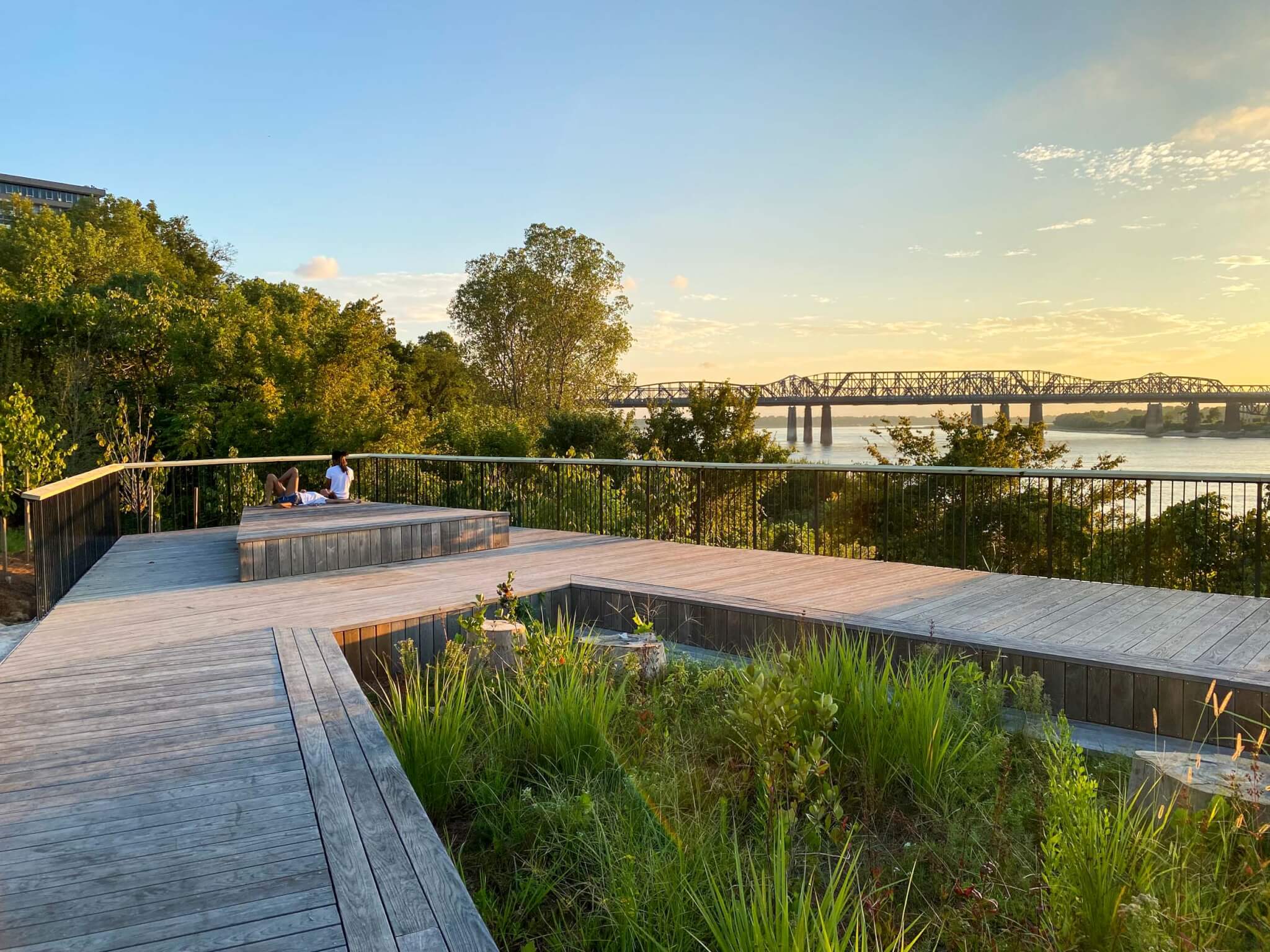
Like Nichols, Lee’s story mixes with larger histories. To thank Lee for his heroism, the City gave him a job as a garbage man, then thought of as coveted employment for a Black man. He retired in 1948 and died four years later, of cancer. The plights of sanitation workers in the city worsened, and in 1968 two garbage collectors, both Black men, were crushed to death in the back of a trash truck. The unionized workers, supported by the NAACP, organized a strike. It went for two months, which drew the attention of Dr. Martin Luther King, who visited the city on April 3 and spoke to a crowd. The following night, he was assassinated while standing on the balcony of the Lorraine Motel. Today the building is part of the National Civil Rights Museum, which stands five blocks from Tom Lee Park.
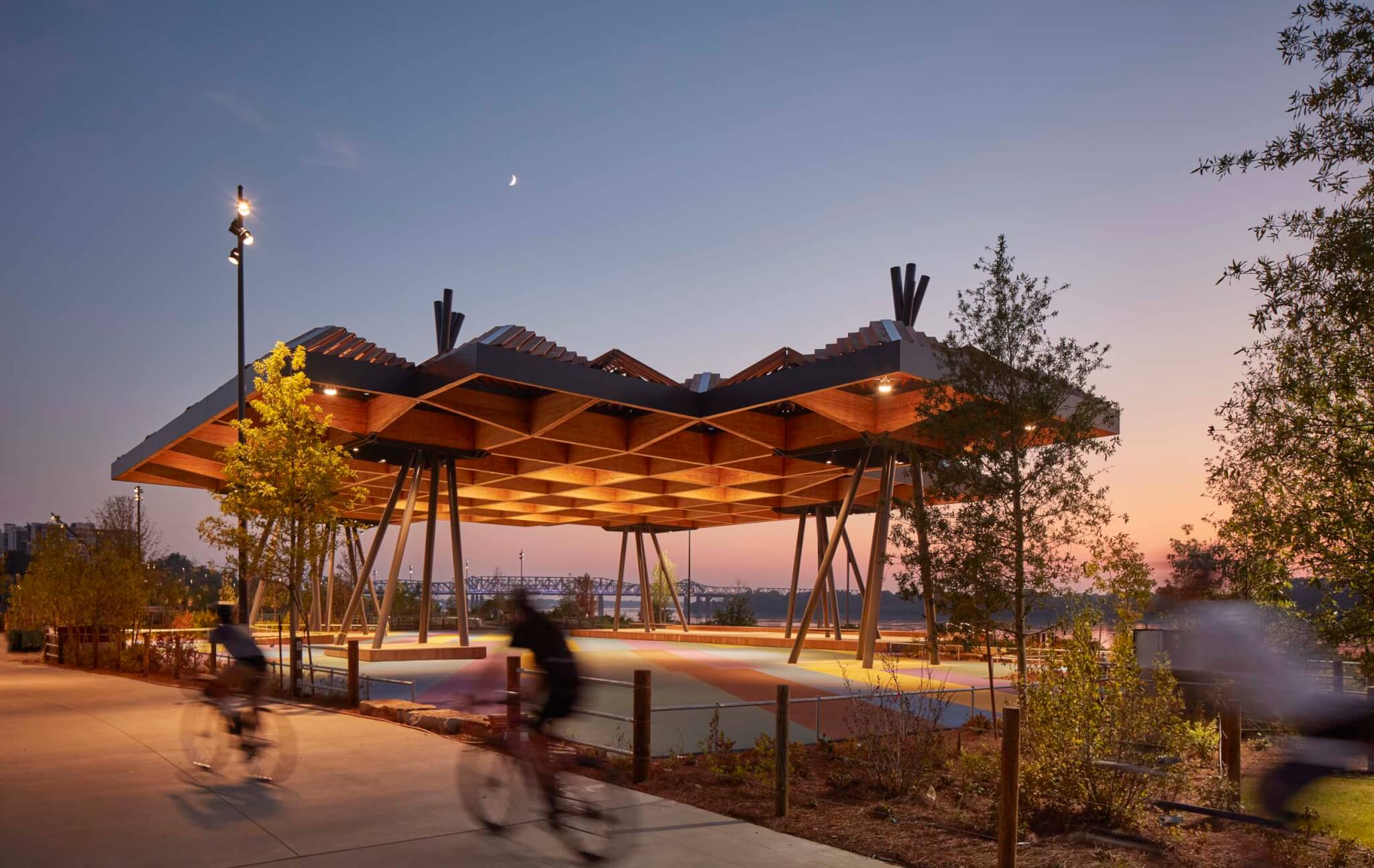
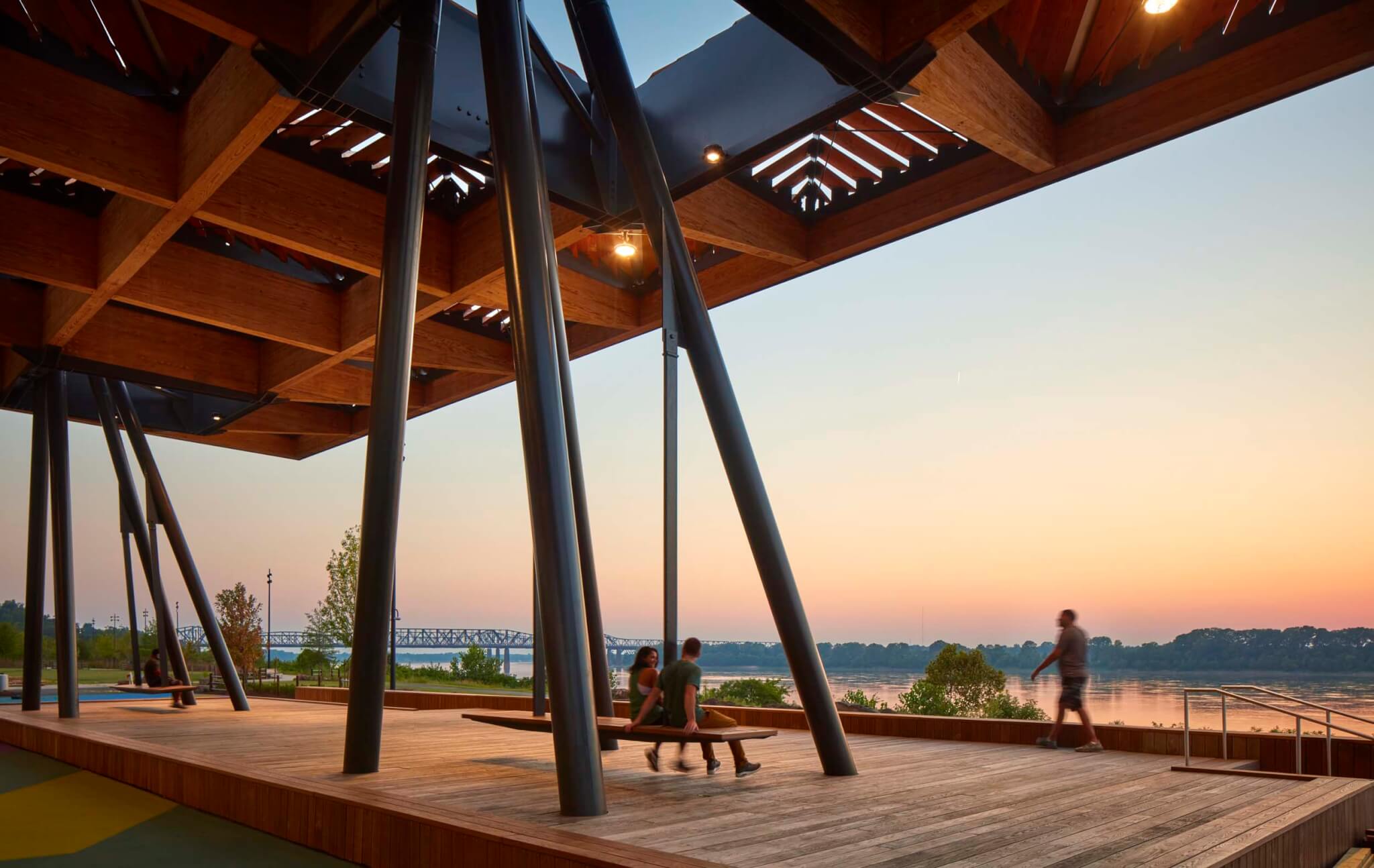
Close to the embankment’s edge, a statue of Tom Lee by David Allan Clark was installed in 2006. It is now complemented by A Monument to Listening, a permanent installation by the Chicago-based artist Theaster Gates that locates 32 solid stone chairs—and one elevated throne, for Lee—in a small spread close to his statue and in a larger circle up the slope. The basalt chairs are deliberately chipped in places, revealing rough patches that are flinty tan and unpolished. Late on a hot afternoon, a crowd gathered to witness Gates bless his anti-monument with two vocalists from his Black Monks ensemble. In a sing-song incantation, the trio delivered Lee’s story, narrating both his brave act and his treatment as a Black man in the South. Their voices built into a tempest before seeking resolution. To close, Gates offered a benediction: “Use this park as a manifestation of love.”
A shortened version of the article appeared in the print and digital editions of AN‘s October/November 2023 issue.
Project Specifications
-
- Landscape architect: SCAPE
- Master planner and architect: Studio Gang
- Location: Memphis, Tennessee
- Project lead and client: Memphis River Parks Partnership
- Contractor: Montgomery Martin Contractors
- Civil engineer: Kimley-Horn
- Structural engineer: Thornton Tomasetti
- MEP: Innovative Engineering Services
- Sustainability analysis: DataBased+
- Lighting designer: Randy Burkett Lighting Design
- Playground designer: MONSTRUM
- Art: Theaster Gates, James Little
- Wood: Firmitas, Timberlab
- Wood Decking: Thermory
- Glass: Guardian Glass
- Roofing: Firestone
- Entrances: Nanawall, YKK
- Chairs and tables: Fermob, Landscape Forms, Loll Designs
- Lighting: Luminii, Louis Poulsen, BK Lighting, Lumenpulse, Pure Edge Lighting










